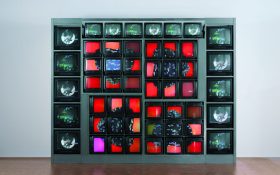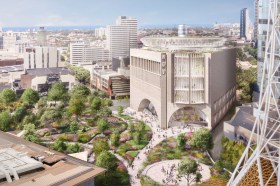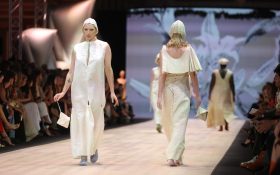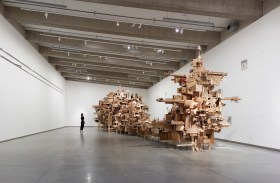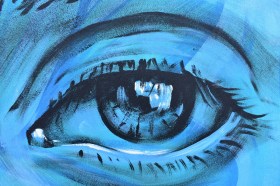Nestled deep within Melbourne’s outer south-east is a suburb called Narre Warren, the name of which means “small hills” in local Aboriginal language. Standing imposingly on one of this suburb’s highways is Bunjil Place, which takes its name from the Aboriginal word for the wedge-tail eagle. The building’s entire, huge-scale architectural design is symbolic of the bird, with its legs manifested as spectacular pillars in the main foyer. Within this building is a library, theatre, café and art gallery – a gallery that brings art to the community in a truly inspiring manner.
The gallery’s current exhibition’s theme is artworks that reimagine Asian heritage, all ceramic pieces, comprising the work of 14 artists whose heritage is from various Asian countries. It’s curated by Thai sculptor Vipoo Srivilasa. The single-room exhibition features all the works sitting on a single platform, perhaps 30 centimetres from the ground, that encircles a central walled-off section. This section houses more surprises – more on that later.
The artists selected for the exhibition are not only consistently imaginative, but are all very different from one another. From Zhu Ohmu’s organic, almost sensual vases, to Nani Puspasari’s idiosyncratic feast of symbolism. There are Yang Qiu’s works, which delightfully live somewhere between childlike curiosity and adult eccentricity and Yen Yen Lo’s regal trio of kiln-roasted imagery. There’s something here for every taste, mood and intellectual interest.
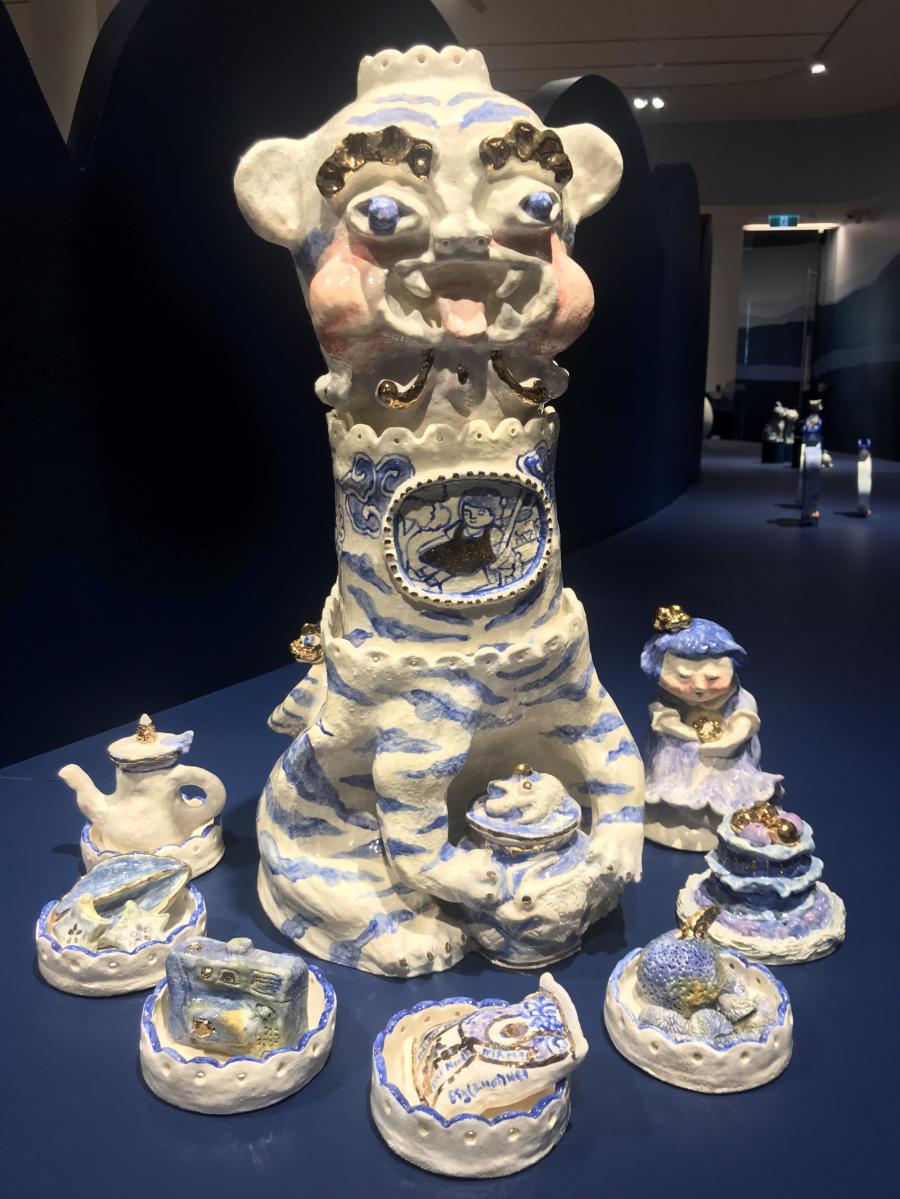
While the quality of the art, the space and the entire building is all of an impressively professional standard (you can take a virtual tour of the building), the most impressive aspect of this exhibition space is the fact that the gallery isn’t just passively putting art in a room and hoping people will show up – it’s actively bringing new audiences to art.
You may have a different experience if you visit during the weekend, but ArtsHub was there on a school day and, during the hour-and-a-half-long visit, no less than four groups of primary schoolchildren were brought into the gallery, shown around, and had discussion and Q&A sessions provided to them for a few of the artworks, helping them to understand, think about and appreciate the art.
Following this, they spent some time in the walled-off, central area of the space, called the “Bloom Room”, which houses tables full of hands-on creative activities; for instance, hand-crafting origami flowers (and then sticking them to a painted tree on the wall, by following printed instructions from Yen Yen Lo) and little clay objects, sitting at tables featuring little drawings and sculptures by the artists whose work lay outside in the main gallery.
Read: Exhibition review: Jurassic World: The Exhibition
This idea becomes even more heartwarming upon the realisation that Bunjil Place lives in the City of Casey, an area with an enormous range of cultural diversity, including high numbers of Aboriginal and Torres Strait Islanders, refugees and asylum seekers. This is an area whose residents speak an astonishing 140 different languages.
Proof of this was the children themselves, who, group after group, clearly came from all over the world.
So, the building is eye-opening, the gallery excellent, the exhibition’s art extremely well made, selected and presented, but what Bunjil Place is doing with the art, for the local community, is the most impressive thing about it. It’s Melbourne at its best – welcoming and inclusive and giving young visitors, wherever they’re from, a new experience. Because of this aspect, and of course the wonderfully eclectic art, this exhibition is heartily recommended.
Generation Clay: Reimagining Asian Heritage will be displayed at Bunjil Place gallery until 24 November 2024.

